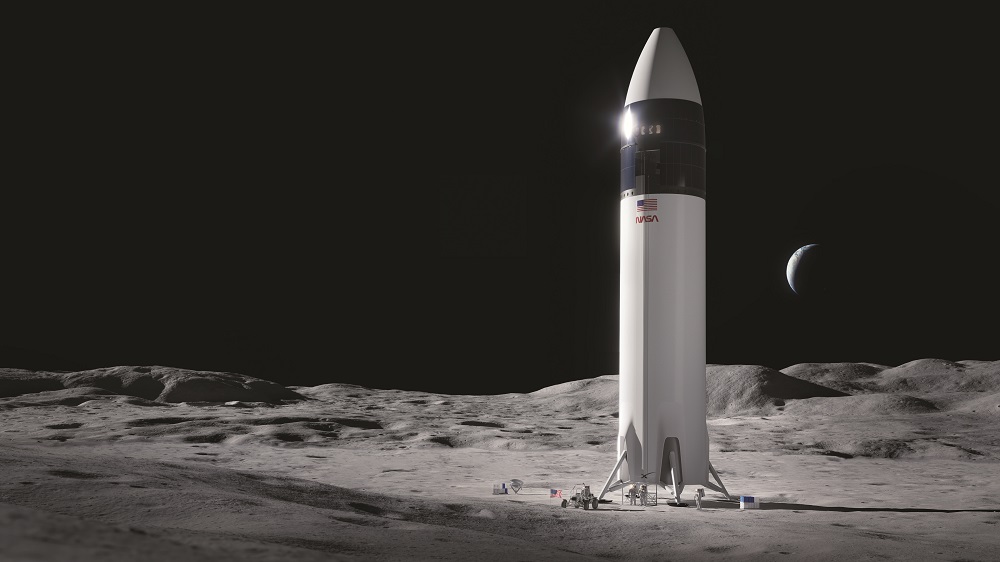WASHINGTON — NASA announced March 23 that it will support development of a second lander to transport astronauts to and from the lunar surface to provide competition with SpaceX for the later “sustainable” phase of the Artemis program.
The agency said it will soon kick off a competition for what it calls Sustaining Lunar Development, which will back work on a second lander separate from the existing Human Landing System (HLS) award made to SpaceX in April 2021. The award will include both an uncrewed demonstration landing and a crewed landing, much like SpaceX’s HLS Option A contract.
The Sustaining Lunar Development award is intended to ensure there are two companies that can compete for later services contracts for Artemis landing missions, providing the competition that many in Congress had lobbied NASA to provide after it made a single Option A award to SpaceX.
“Today’s announcement is what I said to Congress. I promised competition, so here it is,” NASA Administrator Bill Nelson said during a call with reporters about the new program.
One difference about the Sustaining Lunar Development effort is that the landers will have to be designed for greater performance than under the HLS competition, including the ability to transport more astronauts and cargo to the lunar surface and support longer stays. Agency officials, though, did not provide any specific changes in requirements.
SpaceX will not be eligible to compete for the Sustaining Lunar Development contract. However, NASA said it plans to exercise a provision in its HLS award, called Option B, to fund development of changes to SpaceX’s Starship lander to support the new requirements and a second crewed demonstration mission.
NASA officials said the decision to hold a second competition did not reflect a lack of confidence in SpaceX on its HLS development. “We’re still targeting 2025 for that landing. SpaceX continues to make good progress toward that mission,” said Jim Free, associate administrator for exploration systems development. “But beyond Artemis 3 we want to increase the healthy competition and advance our lunar capabilities to support more science, more exploration and an emerging lunar marketplace.”
Sustaining Lunar Development will be run as part of the overall HLS program, said Lisa Watson-Morgan, NASA’s HLS program manager. She said there will be “multiple swim lanes” within HLS for SpaceX’s current Option A work, new Option B work and the Sustaining Lunar Development project. The new award will be a fixed-price, milestone-based award like the original HLS award, and will have very similar requirements to Option B.
Watson-Morgan said NASA will release a draft request for proposals (RFP) for the new project by the end of March, with an industry day in early April. A final RFP will come out later in the spring, with the goal of making an award early next year.
Nelson declined to go into details about the budget for Sustaining Lunar Development. The White House is expected to release its fiscal year 2023 budget proposal as soon as March 28 that will include financial details for the effort.
NASA has struggled, though, to secure funding for HLS, receiving only about a fourth of the $3.4 billion it requested in fiscal year 2021. It did receive full funding, albeit at the much lower level of $1.195 billion, for fiscal year 2022. Efforts to secure several billion dollars of additional funding for a second lander through infrastructure and stimulus bills last year also failed.
A second lander could be significantly more expensive than the $2.9 billion cost of the HLS Option A award to SpaceX. In the original competition, a team led by Blue Origin bid $6 billion while a third proposal by Dynetics bid even more. Those were for the Option A landers that would be less capable, and presumably less expensive, that the ones that would meet the Sustaining Lunar Development requirements.
Free said he hoped that some technology development contracts awarded in September for risk reduction work will lower the cost of the Sustaining Lunar Development landers. “Many folks have told us, ‘We’ve learned a lot and we think our bids can be better this time,’” he said.
